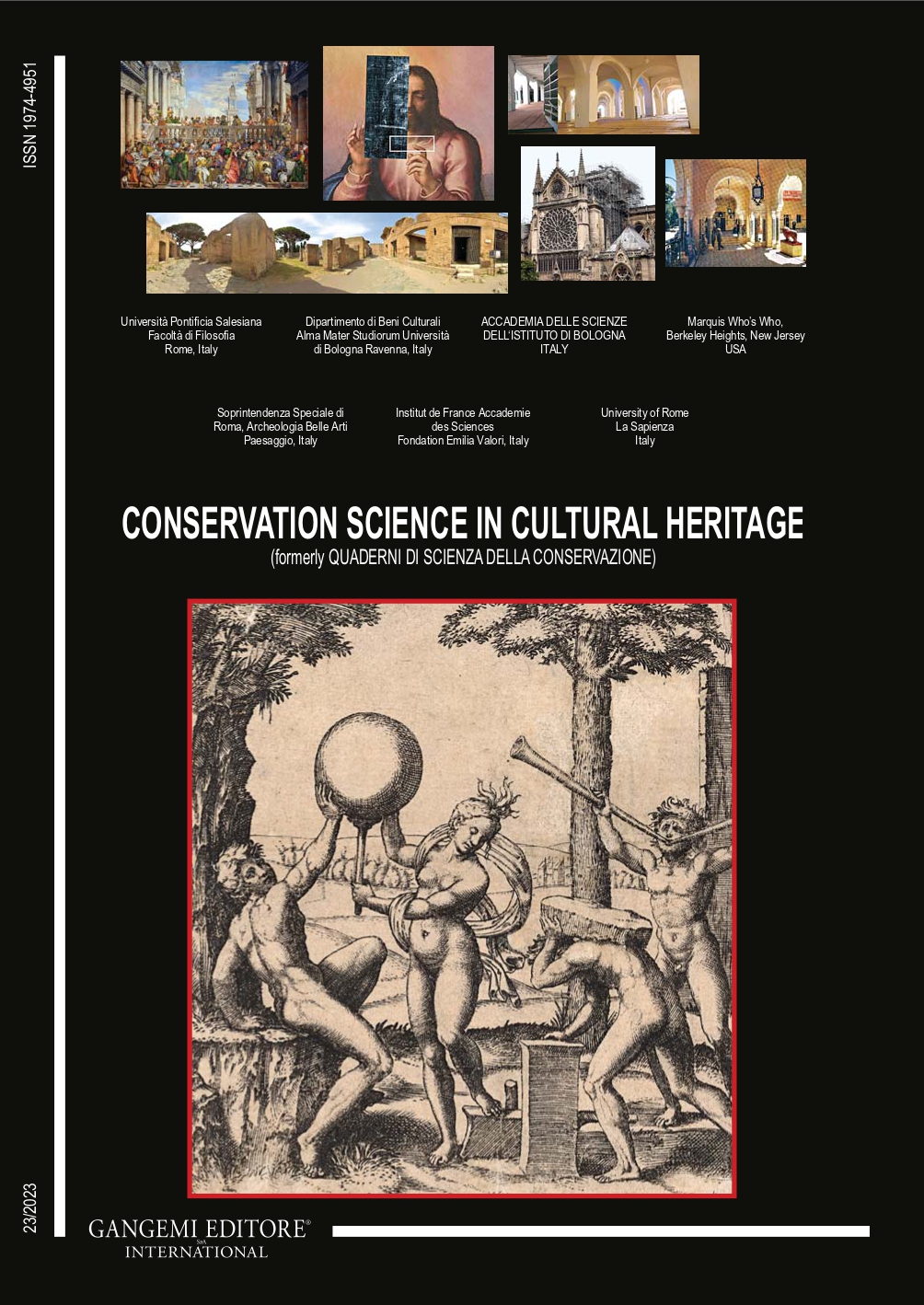FEM structural analysis from UAV photogrammetry projects. Case study: Twenty Eyes Aqueduct in the Wadi of Carcauz (Almeria, Spain)
DOI:
https://doi.org/10.6092/issn.1973-9494/20044Keywords:
UAV photogrammetry, HBIM, FEM, structural simulation, cultural heritageAbstract
The Twenty Eyes Aqueduct stands as a monumental hydraulic structure with a rich history spanning several centuries, poised to be designated as a heritage asset of cultural interest (Bien de Interés Cultural, BIC). This infrastructure poses a significant challenge for structural simulation, given the heterogeneous nature of its materials, geometric irregularities and challenging accessibility. Recent advancements in UAV photogrammetry, coupled with the evolution of BIM and the computational capabilities of modern computers for calculating FEM, present a methodology for simulating the behaviour of structures under applied loads. This approach enables us to address the tasks of reconstruction, protection and conservation of our heritage with unprecedented precision, speed and perspective. In this study, the innovative Cloud-to-BIM-to-FEM methodology is applied, which is capable of converting BIM models generated from point clouds into FEM. Obtaining the point cloud was possible using UAV photogrammetry, during which a 3D survey of the current state of the aqueduct was conducted. The point cloud obtained served as the basis for generating an HBIM that accurately represents the geometry of the aqueduct (Cloud-to-BIM). The HBIM was then transformed into a FEM model that respects the monument’s singularity without excessive geometric simplifications (BIM-to-FEM). Finally, various considerations were deduced regarding the stability of the aqueduct and its structural behaviour by applying loads such as wind and earthquake.
Downloads
Published
How to Cite
Issue
Section
License
Copyright (c) 2023 José Manuel Casimiro-Bernárdez, Patricio Martínez-Carricondo, Francisco Agüera-Vega, Fernando Carvajal-Ramírez

This work is licensed under a Creative Commons Attribution 3.0 Unported License.





